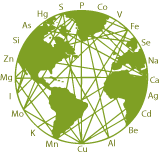Facts
Tungsten is a naturally occurring element found in some rocks and soils. In nature, tungsten exists in mineral forms, but not as the pure metal. Tungsten and its alloys are used in products such as light bulb filaments, x-ray tubes, phonographic needles, welding electrodes, gyroscope wheels, counterbalance and fishing weights, darts, and golf clubs. Tungsten is also used in armour-piercing munitions. Other products that contain tungsten compounds include ceramic pigments and fire-retardant fabric coatings and dyes.
Exposure to very low levels of tungsten may occur by breathing air, eating food, or drinking water that contains tungsten. No specific health effects have been associated with exposure to tungsten in humans. Exposure to high levels of tungsten is unlikely.
Tests are available to measure tungsten in blood, urine, hair, saliva, and feces. Elevated levels of tungsten in the feces can mean high recent tungsten exposure. Elevated levels of tungsten in the urine and/or blood can mean high tungsten consumption and/or high exposure. The average urine concentration for the U.S. population was 0.083 µg/L in 2003.
Source: Tungsten | ToxFAQs™ | ATSDR
